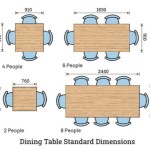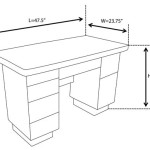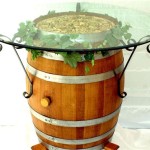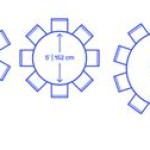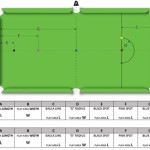Barn Wood End Tables: Rustic Charm and Functional Design
Barn wood end tables offer a unique blend of rustic aesthetics and practical functionality, making them a popular choice for homeowners seeking to add character and warmth to their living spaces. Sourced from reclaimed barn structures, these tables carry a distinct history and inherent beauty that distinguishes them from mass-produced furniture. This article will explore the characteristics, benefits, and selection considerations associated with barn wood end tables.
The defining characteristic of barn wood end tables is the material itself. Reclaimed barn wood, typically pine, oak, or other hardwoods depending on the region, showcases a weathered appearance that is impossible to replicate artificially. Years of exposure to the elements, coupled with the aging process, result in a variety of unique features. These features often include visible grain patterns, knots, nail holes, and variations in color and texture. These imperfections are not flaws but rather contribute to the wood's inherent charm and authenticate its origin. The process of reclaiming this wood is also environmentally responsible, as it repurposes existing materials and reduces the demand for newly harvested timber.
The appeal of barn wood end tables transcends mere aesthetics. They offer a tangible connection to the past and a sense of authenticity that resonates with many individuals. In an increasingly homogenized world, incorporating reclaimed materials into home décor provides a sense of individuality and uniqueness. The stories and history ingrained within the wood offer a conversation starter and a reminder of a simpler time. The durability of reclaimed wood is also a significant factor. Aged wood often possesses a tighter grain structure, making it more resistant to wear and tear than newly harvested timber. This inherent strength contributes to the longevity of barn wood end tables, ensuring they can withstand daily use for years to come. Furthermore, the rustic style complements a variety of interior design themes, from farmhouse and vintage to industrial and bohemian. This versatility makes barn wood end tables a suitable addition to numerous home environments.
The construction of barn wood end tables typically involves careful selection and preparation of the reclaimed wood. Craftsmen often hand-pick boards based on their unique characteristics and structural integrity. The wood is then cleaned and treated to remove any debris or pests. Depending on the desired finish, the wood may be sanded, stained, or sealed to enhance its appearance and provide protection against moisture and wear. The joinery techniques employed in constructing the tables can vary, ranging from traditional mortise and tenon joints to more modern methods. The choice of joinery often depends on the style and design of the table, as well as the preferences of the craftsman. The use of metal accents, such as iron legs or hardware, is also common and contributes to the rustic aesthetic.
Key Benefits of Barn Wood End Tables
One of the primary advantages of barn wood end tables is their exceptional durability. The aging process that barn wood undergoes strengthens its cellular structure, making it more resistant to warping, cracking, and other forms of damage. This inherent strength, combined with the use of robust construction techniques, ensures that these tables can withstand the rigors of daily use for many years. Unlike furniture made from particleboard or other composite materials, barn wood end tables are built to last. The longevity of these tables also contributes to their sustainability, as they require less frequent replacement, thereby reducing waste.
Another key benefit is the unique character and aesthetic appeal of barn wood. Each piece of reclaimed wood possesses distinct markings, grain patterns, and color variations that reflect its history and exposure to the elements. This inherent variability ensures that no two barn wood end tables are exactly alike, making them truly one-of-a-kind pieces of furniture. The rustic charm of barn wood adds warmth and personality to any room, creating a welcoming and inviting atmosphere. The imperfections, such as nail holes and knots, are not considered flaws but rather integral parts of the wood's character. These imperfections tell a story and add to the table's visual interest.
Environmental sustainability represents another crucial advantage of barn wood end tables. By utilizing reclaimed materials, these tables contribute to the conservation of natural resources and reduce the demand for newly harvested timber. Reclaiming wood also prevents it from ending up in landfills, where it would decompose and release harmful greenhouse gases. The use of barn wood is a responsible and eco-friendly choice that aligns with sustainable living practices. Furthermore, many craftsmen who specialize in barn wood furniture prioritize the use of low-VOC finishes and other environmentally friendly materials, further minimizing the environmental impact of their products.
Selecting the Right Barn Wood End Table
When selecting a barn wood end table, several factors should be considered to ensure that it meets individual needs and preferences. The size of the table is a primary consideration, as it should be appropriately proportioned to the surrounding furniture and the available space. Consider the height, width, and depth of the table to ensure that it is both functional and aesthetically pleasing. A table that is too large or too small can disrupt the balance of the room and detract from its overall appeal.
The style of the barn wood is another important factor to consider. Reclaimed wood can vary significantly in terms of color, texture, and the presence of knots, nail holes, and other imperfections. Some individuals prefer a more rustic and weathered look, while others prefer a smoother and more refined finish. Consider the existing décor of the room and select a table that complements the overall style. The type of wood used, such as pine or oak, can also influence the appearance and durability of the table.
The construction quality of the table is paramount to its longevity and stability. Examine the joinery to ensure that it is strong and secure. Look for tight seams and well-fitted components. The finish should be smooth and even, without any drips or imperfections. The legs should be sturdy and level, providing a stable base for the table. Investing in a well-constructed table will ensure that it lasts for many years and provides reliable service.
Care and Maintenance of Barn Wood End Tables
Proper care and maintenance are essential for preserving the beauty and longevity of barn wood end tables. Regular dusting is recommended to remove dirt and debris that can accumulate on the surface. Use a soft cloth or duster to avoid scratching the wood. Avoid using harsh chemicals or abrasive cleaners, as these can damage the finish and alter the appearance of the wood. A mild soap and water solution can be used to clean spills or stains, but be sure to dry the surface thoroughly afterward.
Protecting the table from moisture is crucial, as water damage can cause warping, staining, and other problems. Avoid placing wet glasses or other items directly on the surface of the table. Use coasters or placemats to protect the wood from spills and condensation. If the table is exposed to direct sunlight, consider using a UV-protective finish to prevent fading and discoloration.
Periodic maintenance, such as waxing or oiling the wood, can help to preserve its beauty and protect it from wear and tear. Follow the manufacturer's instructions for specific care recommendations. With proper care and maintenance, barn wood end tables can provide years of enjoyment and become cherished heirlooms.
The cost of barn wood end tables can vary depending on several factors, including the size of the table, the type of wood used, the complexity of the design, and the reputation of the craftsman. Smaller, simpler tables may be relatively affordable, while larger, more elaborate tables can be quite expensive. It is important to consider the value of the table in terms of its durability, uniqueness, and aesthetic appeal. While barn wood end tables may represent a significant investment, they can also add value to a home and provide years of enjoyment.
Barn wood end tables are more than just functional pieces of furniture; they are objects of art that embody history, character, and sustainability. Their unique aesthetic appeal and inherent durability make them a worthwhile addition to any home. Careful consideration of size, style, construction quality, and care requirements will ensure that the selected table meets individual needs and preferences and provides years of enjoyment.

Griffin Rectangular Reclaimed Wood End Table Pottery Barn

Buy Custom Reclaimed Barn Wood End Table Or Night Stand Made To Order From Heartland Woodworking And Furniture Custommade Com

Reclaimed Barn Wood End Table Furniture

Industrial Reclaimed Wood Side Table With Lower Shelf Rustic End Accent

Rustic End Table Made From Reclaimed Wood Nightstand With Lower Shelf Industrial Side

Parquet Square Reclaimed Wood End Table Pottery Barn

Farmhouse Reclaimed Barn Wood End Table From Dutchcrafters Amish

Alaterre Modesto 2 Shelf Metal Strap And Reclaimed Wood End Table Rustic Natural Com

Barnwood End Table With Live Edge Black Walnut Top

Alaterre Furniture Pomona Slate Gray Metal And Reclaimed Wood End Table Amba01sg The Home Depot


